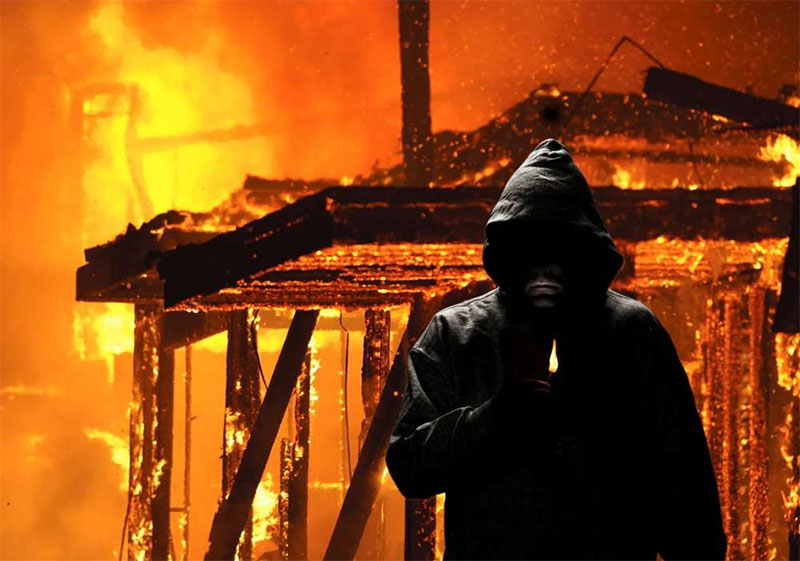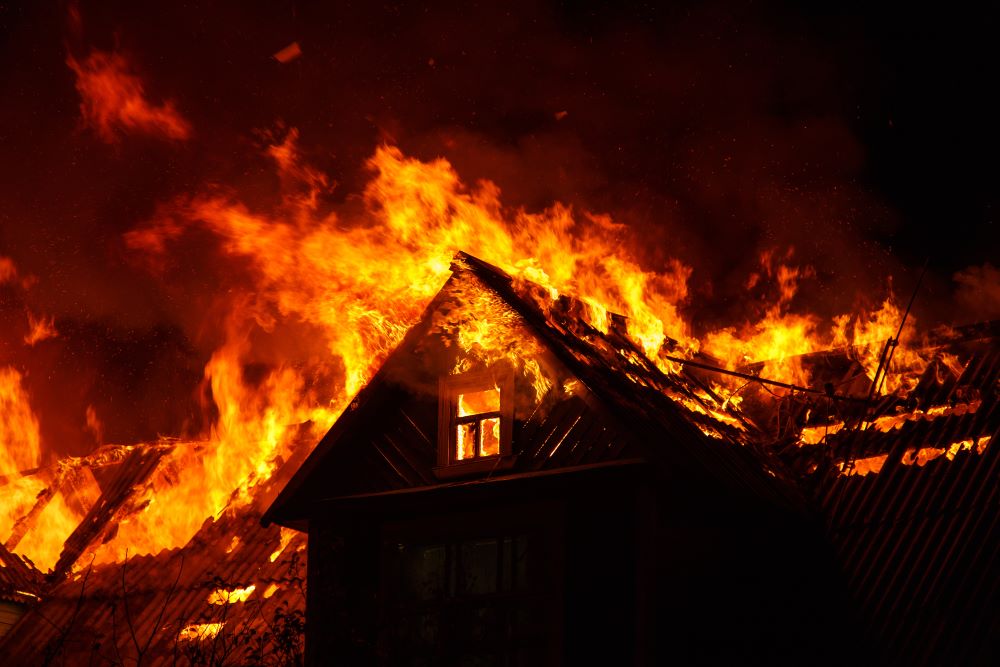Arson is a serious, widespread crime that causes significant property damage and causes numerous injuries and deaths yearly. The good news is that there’s more you can do to help prevent arson and protect property and lives than you might realize.
In this post, we’ll explore data on arson and provide steps you can follow to reduce arson risk at your home or business.
How many arsons happen each year?
According to the FBI, there were 33,395 arsons in the U.S. in 2019, the latest year for which data is available.1 That’s down slightly from the year before, when there were 35,107 arsons.2 Here in Washington state, there were 935 arsons in 2019, which was also below the 2018 level of 1,025 arsons.3
Since 2012, the number of arsons in Washington state has generally increased.
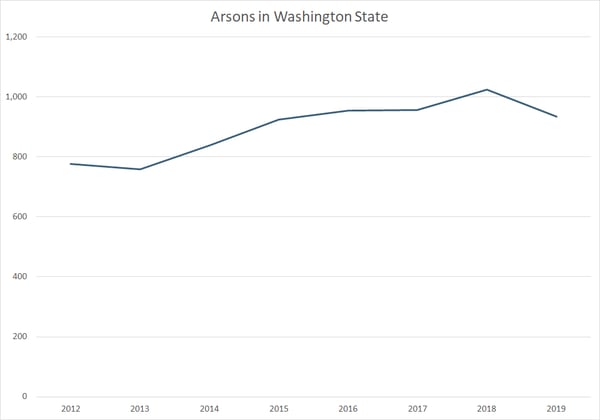
In that time frame, the state population has also increased, and the total number of arsons hasn’t risen as quickly as the number of residents.
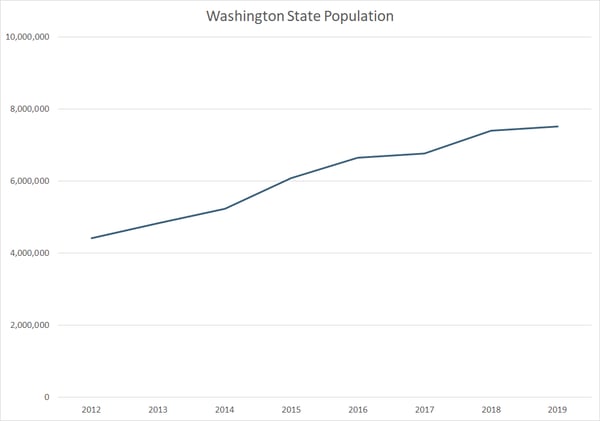
So, the number of arsons per 100,000 residents has declined. That’s an encouraging trend, but it doesn’t change the fact that arson remains a costly, damaging, dangerous crime.
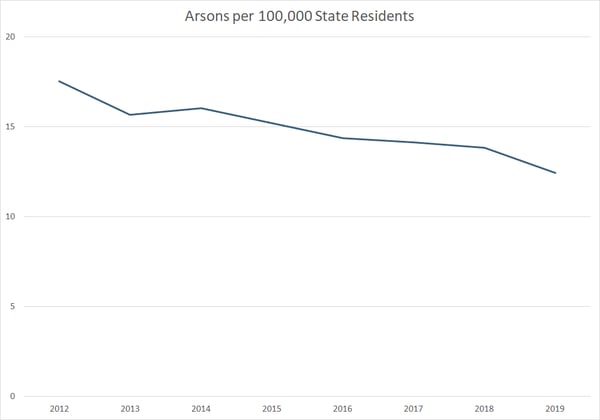
Related:
Arson: What Insurers and the Public Can Do
“Arson is not just something you hear about on the national news, read about in the local newspapers or see in movies. It is a very real, very serious, costly and sometimes deadly crime, and it is very much alive right here in Washington state and the Pacific Northwest,” said Chris Thielbar, a senior special investigator at Country Financial and president of the Arson Alarm Foundation, a Washington state nonprofit dedicated to stopping arson.
What impact does arson have?
The average arson in 2019 caused $16,371 in damages, according to the FBI,4, but that’s just the beginning of the story. The average damage caused to a structure, as opposed to a vehicle or other property, was $29,568. Single-family homes suffered average damages of $30,308, and commercial properties not used for industrial or manufacturing purposes saw $36,402 in damage on average. Industrial/manufacturing buildings suffered the largest damage costs by far, at an average of $190,336.5
Overall, intentional fires cause an average of $1 billion in property damages, 440 civilian deaths and 1,310 civilian injuries per year,6 according to a study conducted by the National Fire Protection Association (NFPA).
Not all intentional fires are arson because arson also requires, by the report’s definition, the fire starter to have intended damage and the fire starter to have been capable of forming criminal intent. For example, some jurisdictions won’t charge people under a certain age with arson, and in some places, setting fire to your own property is legal.7 However, most intentional fires qualify as arson, and, as the data shows, arson causes significant damage.
What can you do to prevent arson?
Current events make a reminder about arson awareness and prevention especially important now. Many buildings are less-frequented than they were before the novel coronavirus outbreak, and civil unrest is leading to protests in some places.
The key to protecting your home or business from arson at any time is to make it a less-appealing target for a would-be firesetter, said Captain Michael Perkow, who leads the Seattle Fire Department’s fire investigation unit.
“If you have a lot of items piled around your home or business, or even dry grasses in that area, that makes things easier for people who are looking for a crime of opportunity,” Perkow said. He suggests taking the following preventive steps:
- Adequately light the area around your home or business.
- Keep trashcans and other waste receptacles in your garage or other locked or gated area.
- Keep the area around your home or business clear of combustible material or debris.
- Consider installing security cameras or doorbell cameras along with signs alerting people they’re being recorded.
- Properly secure construction or other work sites by making paint, wood, construction debris or anything else combustible inaccessible.
Thielbar adds these tips:
- Keep doors and windows locked when a building is unoccupied.
- Board up abandoned buildings.
The U.S. Fire Administration, a part of the Federal Emergency Management Agency that organizes AAW, provides tips on preventing arson at vacant and abandoned buildings, at construction sites, and in the wildland, where wildfire arson occurs.
If you live or work in a wildfire-prone area, keeping the area around your home or business clear of combustible materials will have the double benefit of helping to reduce the risk of wildfire property damage.
You can also help prevent arson by preventing children and teens from becoming arsonists. If you know of a juvenile who’s engaging in fire-setting behavior, look into the City of Seattle’s Fire Stoppers program, or a similar program near you. “Fire Stoppers is a free, confidential, and voluntary program that helps juveniles learn better behavior and can be an effective prevention tool,” Perkow said.
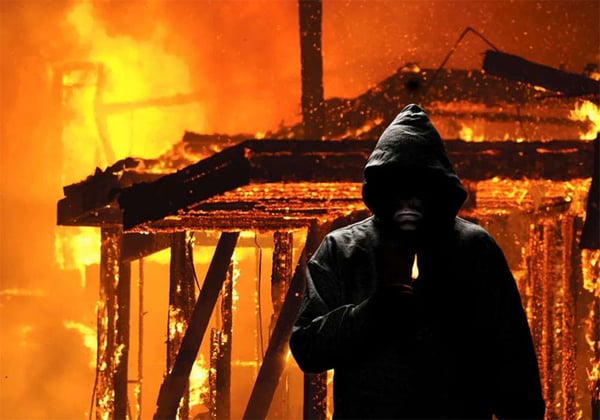 Arson can cause serious property damage, injury, and death, but there are
Arson can cause serious property damage, injury, and death, but there are
many steps you can take to help prevent arson.
Related:
Preserve the Summer Fun: Prevent Rooftop Deck Fires
What should you do if you have information about an arson?
If you see a suspected arson in progress, the first thing to do is call 911, Perkow said. “Be prepared to speak to both fire dispatchers and police dispatchers. They’ll each want different information.” Although both types of dispatchers will ask for information about where the fire is occurring, the fire dispatcher will focus more on what’s on fire: a home, a commercial building, an automobile, or something else, according to Perkow. The police dispatcher will ask whether you saw someone running from the scene and, if so, for a description.
If you have information after an incident, contact the local fire department or law enforcement agency, or contact the Arson Alarm Foundation (AAF) by calling 1-800-55-ARSON (1-800-552-5566) or by visiting the AAF’s website and filling out the online form. The AAF accepts anonymous tips and offers rewards of up to $10,000 for information that helps solve an arson. WSRB is a proud sponsor of the AAF.
“You will be completely anonymous and can report information you have about a suspicious fire,” Thielbar said. “Please do the right thing and report arson fires to us or to your local fire and police departments.”
[1] FBI, https://ucr.fbi.gov/crime-in-the-u.s/2019/crime-in-the-u.s.-2019/topic-pages/arson
[2] FBI, https://ucr.fbi.gov/crime-in-the-u.s/2019/crime-in-the-u.s.-2019/tables/table-12
[3] Washington State Statistical Analysis Center, https://sac.ofm.wa.gov/data
[4] FBI, https://ucr.fbi.gov/crime-in-the-u.s/2019/crime-in-the-u.s.-2019/tables/arson-table-2.xls
[5] FBI, https://ucr.fbi.gov/crime-in-the-u.s/2019/crime-in-the-u.s.-2019/tables/arson-table-2.xls
[6] National Fire Protection Association, https://www.nfpa.org//-/media/Files/News-and-Research/Fire-statistics-and-reports/US-Fire-Problem/Fire-causes/osintentional.pdf
[7] National Fire Protection Association, https://www.nfpa.org//-/media/Files/News-and-Research/Fire-statistics-and-reports/US-Fire-Problem/Fire-causes/osintentional.pdf




